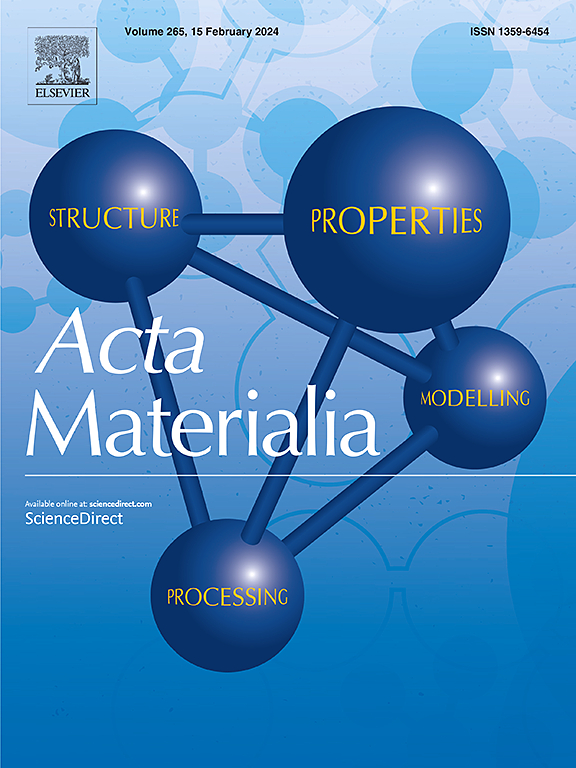Successive stress-induced phase transformations with large stress-strain hysteresis in single crystal Cu-Al-Mn shape memory alloys
IF 8.3
1区 材料科学
Q1 MATERIALS SCIENCE, MULTIDISCIPLINARY
引用次数: 0
Abstract
The successive stress-induced phase transformations in single-crystal Cu-Al-Mn alloys, which exhibit excellent superelasticity and ductility, were investigated using electron microscopy and synchrotron X-ray diffraction. In a Cu-16.8Al-9.6Mn (at.%) alloy, which is in the martensitic phase at room temperature, a stress-induced martensitic transformation from a 6M-type stacking structure to a 2M-type stacking structure was revealed. At the 6M and 2M interface, it was observed that structural changes progress with partial dislocations running every three layers within the 6M structure. A Cu-17Al-11Mn (at.%) alloy, which is in the parent L21 phase at room temperature and exhibits superelasticity, undergoes a successive stress-induced phase transformation of L21 → 6M → 2M, resulting in a shape recovery exceeding 16 % in strain. The 6M → 2M transformation leads to an expansion of the stress-strain hysteresis loop, thereby enhancing the energy dissipation capability. The microstructure observations suggest that deformation in the 2M phase and the complex form of the reverse transformation contribute to the energy dissipation.


单晶Cu-Al-Mn形状记忆合金中具有大应力-应变滞后的连续应力诱导相变
利用电子显微镜和同步加速器x射线衍射研究了Cu-Al-Mn单晶合金的连续应力诱导相变过程,该合金具有优异的超弹性和延展性。室温下处于马氏体相的Cu-16.8Al-9.6Mn (at.%)合金,发生了由6m型堆积体向2m型堆积体的应力诱导马氏体转变。在6M和2M界面处,观察到结构变化的进展,在6M结构中每三层发生部分位错。Cu-17Al-11Mn (at.%)合金在室温下处于母相L21,表现出超弹性,经历了L21→6M→2M的连续应力诱导相变,应变恢复率超过16%。6M→2M的转变导致应力-应变滞回线的扩大,从而增强了能量耗散能力。显微组织观察表明,2M相的变形和反向转变的复杂形式有助于能量耗散。
本文章由计算机程序翻译,如有差异,请以英文原文为准。
求助全文
约1分钟内获得全文
求助全文
来源期刊

Acta Materialia
工程技术-材料科学:综合
CiteScore
16.10
自引率
8.50%
发文量
801
审稿时长
53 days
期刊介绍:
Acta Materialia serves as a platform for publishing full-length, original papers and commissioned overviews that contribute to a profound understanding of the correlation between the processing, structure, and properties of inorganic materials. The journal seeks papers with high impact potential or those that significantly propel the field forward. The scope includes the atomic and molecular arrangements, chemical and electronic structures, and microstructure of materials, focusing on their mechanical or functional behavior across all length scales, including nanostructures.
 求助内容:
求助内容: 应助结果提醒方式:
应助结果提醒方式:


